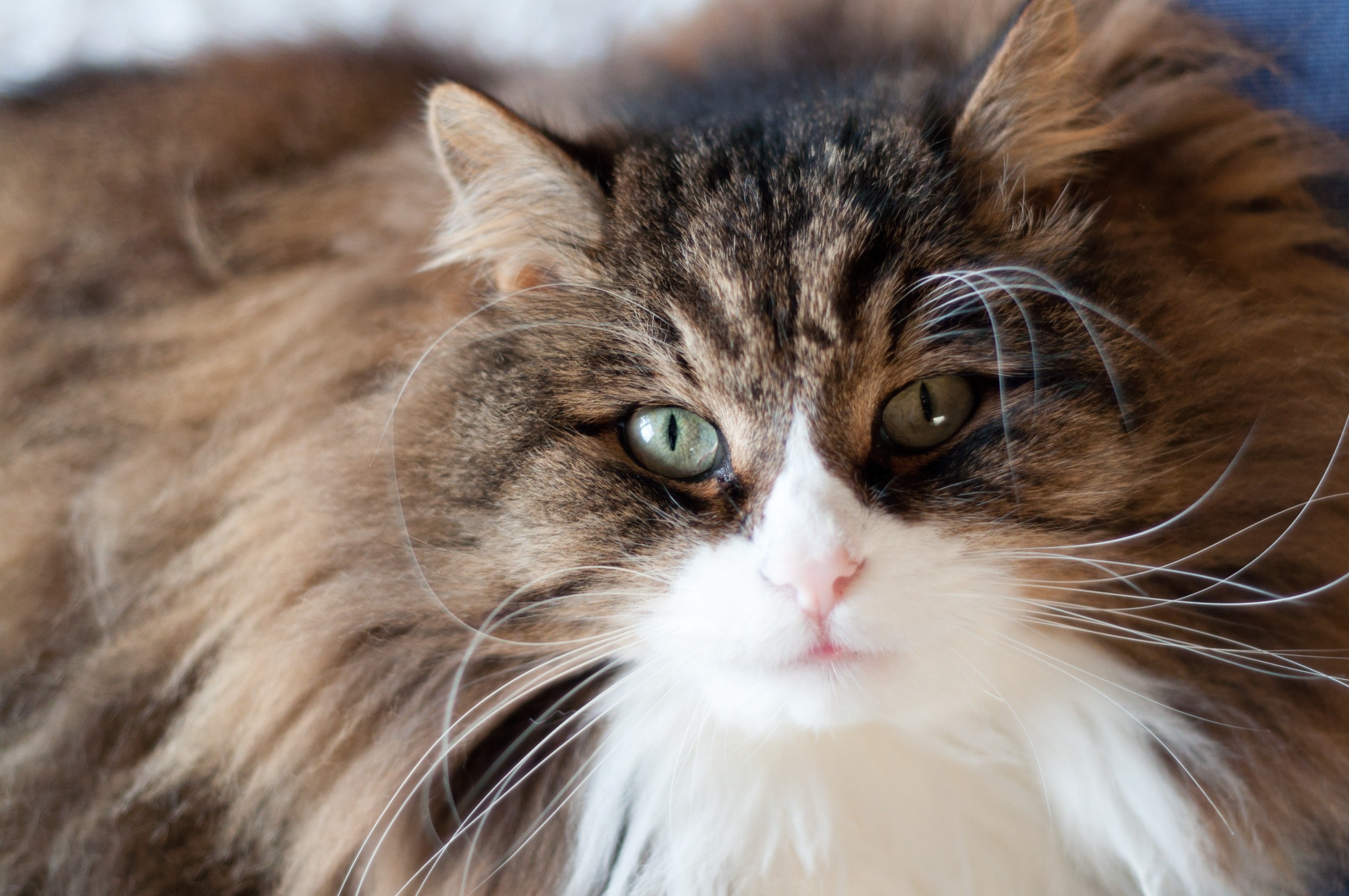
Added natural flavours in pet food
Additives in pet food can serve many purposes, ranging from nutritional benefits to preventing spoiling. While some additives are necessary and beneficial, sadly, not all additives are made equal. Some are simply palatability ingredients, designed to make junk food taste good. So, focusing on added flavours, let’s take a look at additives in pet foods- which ones to look out for, and which ones to avoid.

What is Omega 3,6, & 9 and why is it important to my pet?
Omega 3, 6 and 9 are types of polyunsaturated fatty acids, PUFAs for short. They are absorbed through the gastrointestinal system and act at a cellular level to alter chemical pathways in the body to many advantageous effects. Omega 3s are concentrated in animal or marine sources such as fish, and omega 6 and 9 tend to be found in the plant, seed and nut products.

Benefits of a High Protein Diet for Cats
Research by the University of Exeter has shown that feeding cats a high protein diet can reduce their hunting behaviour in the wild. The study found that feeding a high quality protein diet, where the protein came from meat sources, reduced the amount of prey brought home by a whopping 36%!

What wet food is best for dogs with hepatic disease?
The liver is one of the most important organs in the body. It is a brown coloured organ made up of six individual lobes and a gall bladder and sits in the top third of the abdominal cavity, near the end of your dog's rib cage.

Vegetable gums and stabilisers in wet pet food

What wet food is best for cats with liver disease?

What wet food is best for dogs with kidney disease

Quality Ingredients First: What Goes into Zealandia’s Canned Foods?

Understanding Sulphide Staining in High-Meat Content Pet Foods: What Pet Owners Should Know

Heart disease in dogs and cats, and how can I prevent it

The New Zealand Brushtail Possum: Benefits for Pets

Understanding the Vitamins and Minerals in Zealandia Pet Food

The Benefits of Feeding Lamb Organs to Cats and Dogs

How Can I Fatten Up My Cat or Dog

My cat or dog is itchy, what can I do about it?

Do I Need to Put My Cat or Dog on a Diet?
Everything you need to know about how to assess your pet’s weight, if they need to be on a diet and if so, how to start the process.
As pet owners, it can be hard to know if our pets are the correct weight. Are they underweight or overweight, do they need to be put on a diet? With so much information out there nowadays, it can be confusing. But don’t worry, in this article, we’ll discuss everything that you need to know including how to assess your dog/cat’s body condition, the calories they should be consuming, and how to put them on a diet if they need it.

New Zealand Wallabies: An Unexpected Inhabitant of Aotearoa

What is BPA, and why does it matter?

What food is best for dogs and cats with diabetes?

What food is best for a cat with a history of urinary tract infections?

What are the advantages of feeding hypoallergenic meats?

What wet food is best for cats & dogs with Inflammatory Bowel Disease?
Do you find that your dog or cat commonly has an upset tummy? Does he suffer frequently from diarrhoea and vomiting? Perhaps he has a variable appetite and maybe has lost some weight. Although there are many possible causes of these symptoms, inflammatory bowel disease (IBD) is a common condition in dogs and cats responsible for causing ongoing gastrointestinal signs. In this article, we will take a look at what IBD is, how it is diagnosed and how we can manage it. Diet plays a very important role in the management of IBD, so we will be taking a look at what food is best for dogs and cats with this condition.

What are the differences between Puppy/Kitten Food and Adult Pet Food?
Whether you’re thinking about adding a kitten or puppy to your family, or if your kitten or puppy is getting older, you may be thinking about what is the best food to feed them. If your pet is approaching one year old, it is probably time to think about switching from kitten or puppy food to adult food. But is making this change essential? What are the differences between these diets? And how can you best make the change? Let’s take a look. Do we need to feed kittens and puppies a different food to adult cats and dogs? The short answer is, yes - puppies and kittens need to be fed a different diet than adults.

What other animals can also eat canned cat & dog food?
- You may be keen to support your local wildlife and are wondering what food you can leave out. Or perhaps you are considering feeding some tinned cat or dog food to a different pet. Either way, let’s explore what other animals can also eat canned cat or dog food. It’s important to note that each species of animal has slightly different natural diets and nutritional requirements. So before you consider feeding any animals, it’s important that you do your research first. Let’s look at some animals which can also eat canned cat and/or dog food. Hedgehogs are insectivores. In the wild, they snuffle through the undergrowth looking for bugs such as earthworms, ground beetles, caterpillars, earwigs and millipedes.

What food is best for dogs and cats with pancreatitis?
Pancreatitis is a potentially life-threatening condition which can affect both dogs and cats. But what is pancreatitis? How is it treated? And what should you feed a dog or cat with pancreatitis? Let’s take a look. Pancreatitis means inflammation of the pancreas. The pancreas is a small fleshy organ which sits near the stomach and intestines inside the abdomen. The pancreas has many functions, but is important for digestion and regulating blood sugar levels. When the pancreas becomes inflamed, the digestive enzymes which are normally only active in the gut become activated in the pancreas itself, and the surrounding areas.

Green Tripe for cats & dogs: Benefits, Super Food, Quite Stinky
Increasingly, pet owners and vets are looking for more natural ways to support the health of their pet. ‘Preventative healthcare’ promotes a healthy diet and lifestyle as key components of good health.
However, with the wealth of (sometimes misguided) information available at our fingertips via the internet, and the plethora of diets to choose from, it can be hard to know what’s best for our feline and canine friends.
This article discusses the potential pros and cons of an increasingly popular ingredient for pets, green tripe.

Can chewing natural dog treats regularly help prevent Periodontal Disease?
Periodontal disease is one of the most common health conditions affecting adult dogs. It affects more than 80% of dogs over the young age of only 3 years. It’s a painful condition that can progress if left untreated, causing problems around the rest of the body, such as kidney and heart disease. The good news is that periodontal disease is preventable! So, here’s all you need to know about keeping your dog’s teeth and gums healthy.
What is Periodontal disease?

What wet food is best for cats and dogs with hyperthyroidism conditions?

What wet food is best for cats with kidney disease?
Sadly, kidney disease is very common in senior cats, in particular chronic kidney disease (or CKD). Unfortunately, there is no cure for chronic kidney disease, so treatment is aimed at both improving quality of life and slowing the progression of the disease. Diet is a very important, and clinically proven, part of the management of kidney disease. So, let’s explore what food is best for cats with kidney disease.

The effects of the killer poison 1080 on domestic animals


